An average 60% of what we put on our skin is absorbed into our bodies. It becomes part of us! Therefore, it is imperative that we choose our skincare as carefully as we should choose our foods. Just as ultra processed foods are garnering media attention, so should skincare for the same reason.
Here at Heavenly Organics Skin Care, our approach to skincare is ‘if you can’t eat it, don’t put it on your skin’ and to use as few ingredients in each product as possible – because – when two or three ingredients do the job we need, why add twenty more?
We do not bulk our products out with water – aqua – often found to be the first ingredient in lotions. Water promotes microbial growth so when it is added to a product, the microbial growth issue is combatted with the addition of a whole host of preservatives (many of which are listed below) which are compromising to our health.
At Heavenly Organics Skin Care, we do not use water as an ingredient in our products. This means our products are 100% goodness and a little goes a long way. This is unlike so many other well-known products where there will be just one active ingredient hidden in a list of tens of other ingredients, that is negated by the addition of water and other body compromising ingredients.
Overall, I’ve found that if a skincare product can be purchased on the high street, it generally contains ingredients to avoid. Please note that all the information below is based on my own reading, research and experience. I am not medically qualified. Please also be aware that this list is based on ingredients that are permitted for use in the UK. There are some ingredients banned in the UK but permitted for use in skincare in other countries. These are not listed here.
Here’s a list of ingredients we will never use and why we believe they should be avoided:
Alcohol
Often found in – many different skincare products from cleansers to creams for apparently different purposes such as preservation, a solvent to blend ingredients together and prevent separation, an astringent, to help penetration of other ingredients deeper into the skin layers, to facilitate quick drying of a product.
Examples of different alcohols to watch out for: ethanol; ethyl alcohol; SD alcohol /alcohol denat/denatured alcohol
Cetyl, cetearyl, stearyl are fatty alcohols deemed to be non-skin irritating. However, we believe any alcohols in skincare should be avoided. People can often be tempted to use products with alcohols in to help with oily skin. However, this can cause to the skin lipid skin cell depletion as well as inflammation which stimulates the sebaceous glands to produce more sebum (oil). Thus, creating more oily skin and potential pore clogging which can lead to breakouts and acne. A vicious circle but one that is avoidable.
Aluminium
Often found in antiperspirants.
Preventing sweating (a VERY necessary function for health) leads to pore clogging and toxin accumulation. When aluminium builds up in the body it can cause numerous issues including the widely publicised one of promoting proliferation of cancer cells in the breasts. Other issues include disrupting and damaging cells and causing imbalances in the endocrine system and a whole host of issues across the entire body.
Butylated Hydroxyanisole (BHA) & Butylated Hydroxytoluene (BHT). Use has been restricted in the UK yet it is still permitted.
Often found in lipsticks, sunscreen and moisturisers.
A fat-soluble synthetic compound used as a preservative in skincare. These synthetic antioxidants are potential carcinogens, and they can cause hormonal disruptions as well as liver & kidney damage. They have also been known to cause symptoms such as headaches, hives, rashes and fatigue.
Cera Microcristallina (also known as microcrystalline wax)
Often found in lipsticks, lip balms, mascaras, eyeliners, creams, and lotions.
A petroleum derived ingredient (I could just leave it at that!), its main purpose is to provide structure, stability, and texture to a product as well as being an emulsifier. See below on Petrolatum for more information.
Dimethicone (also known as polydimethylsiloxane)
Often found in: moisturisers & hair care.
Dimethicone is a synthetic silicone – a partially liquid substance derived from silica. It is an emulsifier, binding a product together, to prevent separation. It is also used as a moisturizer helping to prevent moisture loss from the skin and improve the appearance of the skin, giving it that hydrated, plump, smooth look and filling in fine lines and wrinkles. It is also an occlusive which means it prevents moisture loss from the epidermis (top layer of the skin). It does so by acting a protective barrier and can thus clog up our precious pores creating breakouts and trap in bacteria.
Ethylenediaminetetraacetic Acid (EDTA)
Often found in: products that lather.
EDTAs are common preservatives that prevent the growth of bacteria, mould, and yeast. They also help skincare products lather and neutralise hard water build-up on your scalp and skin. One of the purposes is to enable other chemicals to penetrate your natural skin barrier, thus allowing other potentially harmful ingredients to enter your body.
Isopropyl Myristate and Isopropyl Palmitate
Often found in: moisturisers and anti-ageing creams.
Isopropyl Myristate is the combination of isopropyl alcohol and myristic acid. A compound that encourages increased absorption of active ingredients into the skin. Yet it is also thought to be highly comedogenic – pore clogging. Isopropyl palmitate is a thickening agent used in many creams and sunscreens and is also highly comedogenic.
Oxybenzone
Often found in: sunscreen – a synthetic UV filter.
Oxybenzone, also known as benzophenone-3, is an organic compound that has been widely used in broad-spectrum sunscreens since the 1970s helping filter both UVB and UVA rays. Hawaii has banned this ingredient after a study discovered that oxybenzone contributed to bleaching and harming of coral reefs. The European Chemical Agency (ECHA) has classified oxybenzone as a potential endocrine disruptor. The European Union has introduced regulations limiting the concentration of oxybenzone to 6% in sunscreen products. Oxybenzone can absorb into the body alarmingly quickly and increasingly so with further applications – way beyond safe recommended levels. It often causes allergic reactions and has relatively high rates of skin reactions. It has even been detected in human breast milk, amniotic fluid, blood & urine. Children may be more susceptible to the side effects due to their skin’s potential for higher absorption.
Parabens
Often found in: many skincare products.
There are different types of parabens – prefixed – for example: isopropyl; propylparaben; butylparaben to name a few.
A cheap preservative which many people are aware of due to the media attention they received and consequently some parabens have been banned for use in cosmetics whilst others have been restricted with a maximum permitted concentration limit. This group of preservatives are deemed hormone disruptors and can mimic the effects of oestrogen, which have been linked to cancer formation and reproductive issues such as infertility in women. Other hormonal negative side effects can include changes: in brain function and cholesterol; thyroid function, immune system. They often cause allergic reactions with a wide range of dermatitis symptom such as swelling, itchiness, dry irritated and flaking skin.
Petrolatum
Often found in: creams and lotions.
Derived from petroleum, alternative names include petroleum jelly, mineral oil, and paraffin. These are extremely common and especially so in medically prescribed topical creams (think aqueous creams) – alarming to say the least. It is often hailed as a wonderful moisturising agent due to its ability to create a barrier on the skin, preventing water loss and protecting the skin from external factors. However, it does this by suffocating the skin and clogging the pores. Therefore, the skin cannot breathe and is prevented from properly performing one of its core functions. Bacteria and any other pollutants within the dermal layers of the skin will remain trapped. All products derived from petrolatum have the potential to contain carcinogens and irritants if not fully refined.
Parfum or Fragrance
Often found in: many cosmetics.
Synthetic fragrances are lab-manufactured, not naturally occurring, but can be created from a blend of natural and man-made ingredients, none of which are required to be listed on the ingredients – the word ‘parfum’ or ‘fragrance’ can simply be used. Their primary use is to keep products fragrant for longer periods of time, usually about twice as long as natural scents can. Often comprised of toxic ingredients including hormone disruptors amongst others.
Polyethylene glycol (PEG)
Often found in creams as a thickener or emulsifier – previously those exfoliating beads that found their way easily into our water systems were made from this.
Derived from petroleum and considered to be a carcinogen and a skin irritant can impact the respiratory system. It can also strip off the natural oils (sebum) from your skin which sends a message to the sebaceous glands to produce even more. This can result in imbalanced and potentially overly oily skin.
Propylene Glycol
Often found in: a wide range of skincare including lotions, shampoos and serums. It is also a common additive in foods.
Often derived from petroleum (see Petrolatum above), it is yet another preservative, a humectant (draws water into the skin), a solvent (dissolves powdery substances). It can lead to contact dermatitis, irritations and can clog pores.
Sodium Benzoate
Often found in: creams to deodorant (many products).
A chemical and odourless crystalline powder made by combining benzoic acid and sodium hydroxide. Some say sodium benzoate is safe, others not. Therefore, I er on the side of caution and avoid it. One great concern about sodium benzoate is its ability to convert to benzene, a known carcinogen.
Sodium Lauryl Sulphate (SLS)/Sodium Laureth Sulphate (SLES)
Often found in: shampoo, body wash, shaving foams, foundation, face wash, mouthwash, and toothpaste.
It’s a surfactant – a lathering agent, a skin irritant due to it stripping the skin of its own natural sebum/oils it can easily disrupt the skin oil balance as well as its natural barrier protection. Sodium laureth sulphate binds less to the skin than sodium lauryl sulphate so it could be less irritating. Some products will claim to be free from SLS/SLES but use a different surfactant that can still strip the natural oils from the skin. It is also comedogenic (pore clogging) and may cause breakouts/acne.
Talc
Often found in: baby powder, face powder, eye shadow.
Talc, or magnesium silicate (mainly made of magnesium, silicon, and oxygen), is a mineral known for its silky texture and absorbency ‘qualities’ aiding a smooth appearance on the skin. However, it is comedogenic which can create breakouts. In addition, due to how moisture absorbent it is, it can strip the natural oils from the skin, drying it out and disrupting its natural balance. Thus, rendering it more prone to irritation. The most worrying issue with talc is the potential presence of asbestos, even in trace amounts – asbestos is a known carcinogen. Talc is easily inhaled due to its fine particle composition. There have been concerns about the use of talcum powder in the genital area and an increased risk of ovarian cancer.
Triclosan – sometimes called triclocarban.
Often found in: antibacterial soaps & toothpastes (now banned in mouthwash).
This ingredient is an antimicrobial agent commonly found in antibacterial soaps. A consequence of its widespread use is that bacteria have become more resistant to it. Triclosan can be disruptive to the endocrine system (hormones are secreted by the glands of the endocrine system, travelling through the bloodstream to various organs and tissues in the body telling them what to do or how to function). Triclosan can accumulate in human fatty tissues and can be passed on to babies in the womb during pregnancy. Triclocarban is permitted in all cosmetic products, except for mouthwash, up to a maximum concentration of 0.2%. Backing up the concern for its potential risks, toothpaste containing triclocarban or triclosan must come with a warning that is it not suitable for use for children under the age of 6.
Trimethicone
Often found in moisturisers and hair care.
See Dimethicone – trimethicone is another silicone that performs similar functions to dimethicone except it is apparently more lightweight and more appropriate for oily skin. However, the results and effects are the same as are our issues with it.
Toluene (may be listed under: benzene, toluol, phenylmethane or methylbenzene)
Often found in: nail polish, nail polish removers and hair dyes.
Toluene is petrochemical solvent and can be used as an ingredient in nail polish removers, due to its ability to help dissolve other substances in nail polishes. It is also used in nail polishes to facilitate a smooth finish. A synthetic antioxidant used to improve product stability and reduce oxidation. Derived from petroleum or coal tar, it is extremely powerful and cause all manner of bodily issues such as disruption to the immune, nervous, respiratory and reproductive systems.
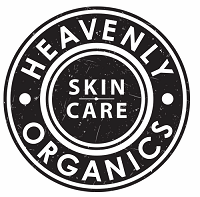




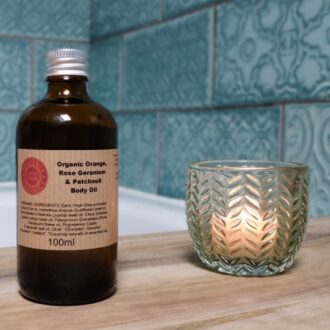
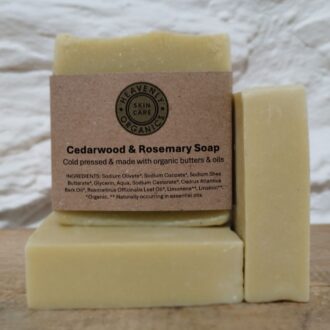
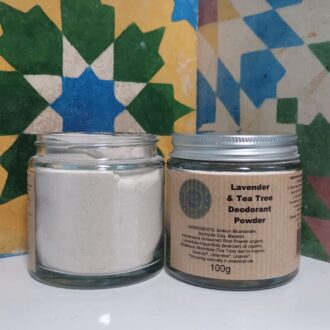
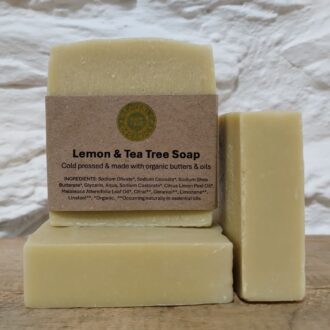

Really interesting article. I downloaded the Yuka app because I was worried about ingredients in my skincare products and pretty much changed my entire regime after scanning a few different products I was using everyday.